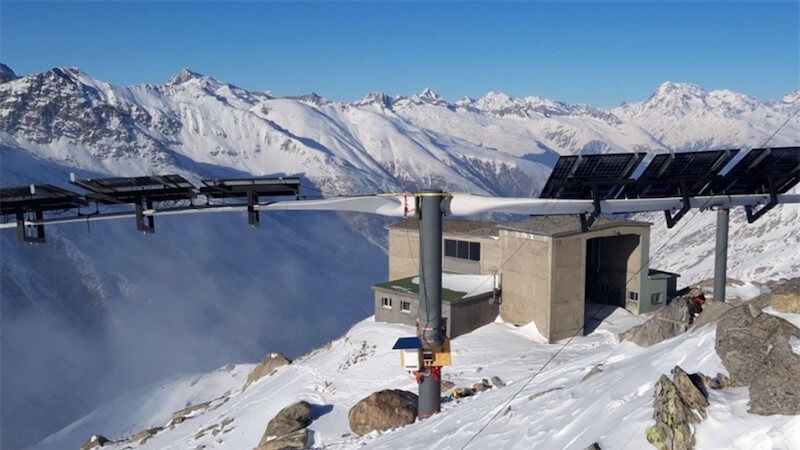Start-up installs solar systems on decommissioned wind turbines
In Switzerland, a start-up is now screwing solar systems onto decommissioned wind turbines. This is intended to counteract the problem of disposing of old wind turbines.
As part of the energy transition, the number of wind turbines is increasing worldwide. Although the share of wind energy in the global electricity mix is increasing, there is a problem that should not be underestimated. Because when the wind turbines reach the end of their useful life, the recycling of the system turns out to be complicated.
Many providers are therefore taking countermeasures and designing their systems with the aim of a circular economy. But thousands of plants that are already in operation are unlikely to be recyclable at the end of their lifetime. The Swiss start-up Turn2Sun has developed a creative solution for this.
Turn2Sun screws solar systems onto decommissioned wind turbines
The provider describes the principle as “Blade2Sun”. This system uses the strong structure of rotor blades to enable large solar farms with a minimal footprint. All that is required for a construction is a mast screwed into the ground and at least two rotor blades that “hover” horizontally above the ground.
The start-up then installs solar panels on the rotor blades, which feed electricity into the local power grid. The first prototype is located in the Swiss Alps at an altitude of 2,500 meters and has 8.4 meter rotor blades. The screwed-on panels achieve an output of 16,430 watts.
Technology enables solar power in hard-to-reach places
The technology allows the space underneath the rotor blade to be used for other purposes. In addition, installation in places that are difficult to access is also conceivable. For example, the Swiss Alps hardly allow the installation of classic solar systems.
Added to this is the already mentioned waste problem. However, the use of non-recyclable rotor blades for the generation of solar power makes it possible to use the structures after their actual lifetime. In summary, it is a promising solution in the fight against climate change.
Also interesting:



